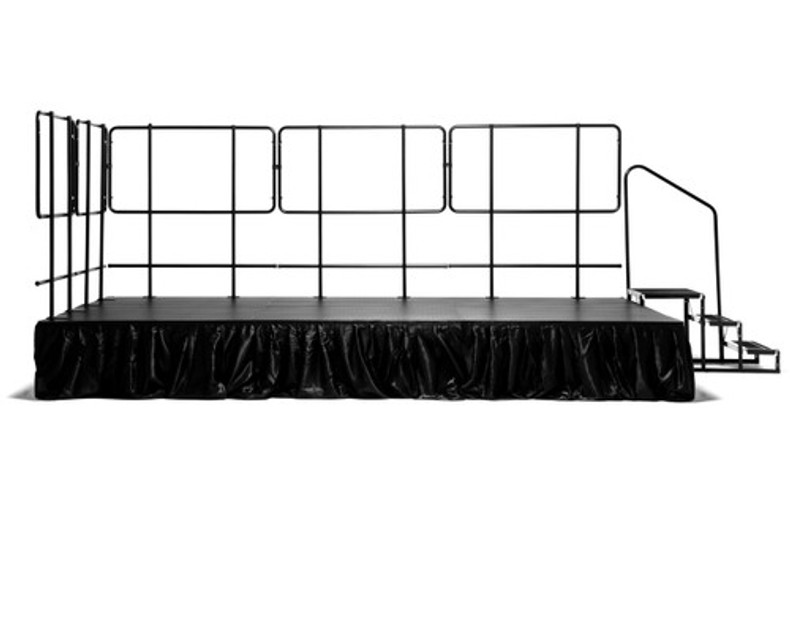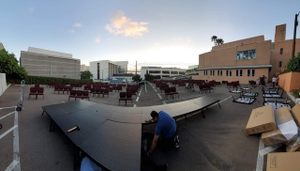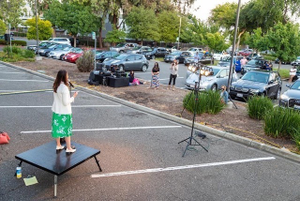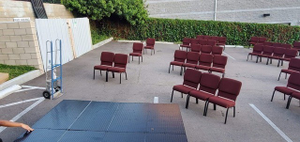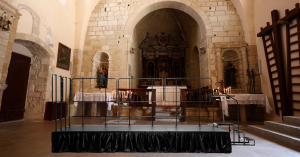When planning an event, especially one that requires a stage, every detail matters. The stage stairs are one of those details that often get overlooked, but they play a critical role in the overall success and safety of your event. Whether you're organizing a corporate function, a concert, or a theatrical performance, the right set of stairs can enhance both the functionality and the aesthetic of your portable staging setup. This guide will delve into the various factors you need to consider to choose the ideal stage stairs for your event, ensuring that they meet all your needs and expectations.
- Understanding the Purpose of Your Event
- Choosing the Right Venue
- Assess the Event Requirements
- Safety Considerations
- Design and Aesthetics
- Portability and Setup

The first and perhaps most important step in selecting the right stage stairs is to fully understand the purpose and nature of your event. The event's purpose will significantly influence what kind of stairs you need. For example, a corporate event or a conference might require stairs that are sleek and professional, complementing the portable staging and overall decor. On the other hand, a concert or a theatrical production may demand more durable stairs that can handle heavy foot traffic and the dynamic movements of performers.
Understanding the purpose also means considering the demographics of your attendees. Are there going to be children, elderly participants, or individuals with mobility challenges? The answer to this will guide you in choosing stairs that are accessible and safe for everyone involved. If your event includes a variety of age groups, you'll want to opt for stairs with lower steps and stage rails for portable stages to provide extra support.
Moreover, the type of event can also dictate the style of the stairs. For instance, a fashion show may benefit from a more stylish and visually appealing staircase, while a music festival might prioritize functionality and ruggedness over aesthetic appeal. The clarity in the event’s purpose ensures that the stairs not only fit the stage but also enhance the overall experience for participants and audience members alike.
The venue is another crucial aspect that will heavily influence your choice of stage stairs. The venue’s layout, size, and location will determine the type of stairs that will work best for your event. Indoor venues, such as conference centers, theaters, or ballrooms, often have specific architectural features that need to be taken into account when choosing stage stairs.
For indoor venues, you’ll need to consider how the portable staging integrates with the venue’s existing architecture. If the venue has a permanent stage, the stairs you select must be compatible in terms of height, width, and stability. Additionally, the flooring of the venue should be considered to ensure the stairs remain stable and safe during use.
In outdoor venues, the challenges multiply. The ground may be uneven, weather conditions can be unpredictable, and the overall environment can vary greatly. In such cases, it’s essential to choose stairs for stage that are not only durable but also adaptable to different terrains. Stage rails for portable stages become particularly important in these settings, offering additional safety on potentially slippery or unstable surfaces.
Another critical aspect to consider is the venue’s capacity and how it influences foot traffic. In larger venues, you might need multiple sets of stairs to facilitate easy access to the stage from different directions. This not only improves the flow of the event but also enhances safety by preventing bottlenecks and ensuring that everyone can access the stage without difficulty.
Once you’ve got a clear understanding of your event’s purpose and venue, it’s time to dive into the specific requirements of the event itself. These requirements will vary depending on the type of event, the number of participants, and the kind of activities that will take place on stage.
First, consider the number of people who will be using the stairs. If your event involves a large number of participants who need to quickly move on and off the stage—such as in a graduation ceremony or a talent show—you’ll need stairs with wider treads and shallow risers to accommodate this movement. Stairs that are too narrow or steep can lead to accidents and disrupt the flow of the event.
If your event includes elderly participants, children, or individuals carrying props or equipment, it’s essential to choose stairs with lower, more manageable steps. In these cases, stage rails for portable stages are not just a recommendation but a necessity. These rails provide the extra support needed to ensure that everyone can use the stairs safely, regardless of their physical condition.
Another important consideration is the durability of the stairs. For events that involve heavy equipment or props, you’ll need stairs that can support the additional weight without compromising stability. Opt for materials that are both lightweight and strong, such as aluminum or high-density plastic, which offer a good balance between portability and durability. The right materials will ensure that your stairs for stage remain stable and safe throughout the event, regardless of the demands placed on them.
Safety should always be a top priority when choosing stage stairs. This goes beyond just ensuring that the stairs are sturdy and well-constructed; it also involves considering the overall user experience. The stairs must be stable enough to support the weight of the users, with materials that are resistant to wear and tear. This is particularly important if your portable staging is going to be used frequently or in different locations.
Stage rails for portable stages are an essential safety feature, especially for events with a large number of participants or for those involving high-profile guests. These rails provide crucial support, helping to prevent falls and giving users the confidence they need to ascend and descend the stairs safely. When selecting rails, make sure they are securely attached and made from durable materials, such as metal or reinforced plastic.
The surface of the stairs is another key safety consideration. Non-slip treads are a must, especially for outdoor events or venues where participants might be wearing different types of footwear, including high heels or costumes. A non-slip surface ensures that even in wet or slick conditions, the stairs remain safe for all users.
Lighting also plays a vital role in safety. If your event takes place in a dimly lit environment or during the evening, proper illumination of the stairs is crucial. Integrated LED lights or strategically placed spotlights can enhance visibility, ensuring that the stairs are easily navigable, even in low light conditions.
While safety and functionality are paramount, the design and aesthetics of your stage stairs should not be overlooked. The stairs should complement the overall design of your portable staging and the event itself. The right design can enhance the visual appeal of the stage, contributing to the overall atmosphere and experience of the event.
For formal events, such as corporate gatherings or awards ceremonies, consider stairs with a polished, refined look—perhaps using materials like wood with a rich stain or metal with a sleek finish. These can blend seamlessly with the portable staging, creating a cohesive look that enhances the professionalism and elegance of the event.
In contrast, for more casual or themed events, you might opt for stairs with a bold color or unique design that makes a statement. Customization options, such as adding logos or decorative elements, can also help your stairs reflect the event’s branding and theme, contributing to a memorable experience for attendees.
It’s important to remember that the design of the stairs should not only be visually appealing but also practical. The width of the stairs, the height of the risers, and the presence of stage rails should all be considered to ensure that the stairs are not just decorative but fully functional and safe for all users.
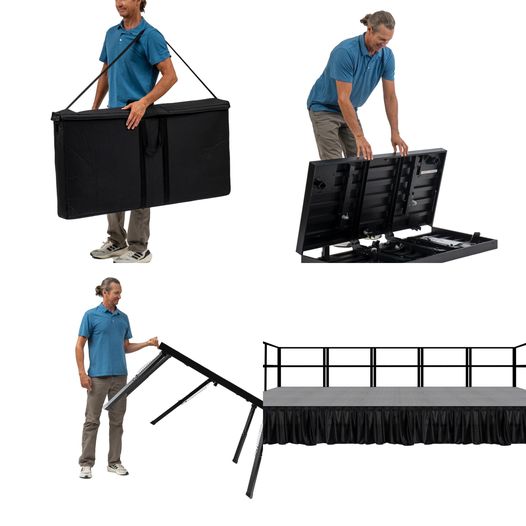
One of the primary advantages of portable staging is its versatility and ease of transport. However, these benefits can be lost if the stairs are heavy, cumbersome, or difficult to assemble. When considering the options of stairs for stage, it’s essential to consider how easy they are to move, set up, and store.
Lightweight materials such as aluminum or composite materials are ideal for stairs that need to be frequently transported or set up in different locations. These materials offer a good balance between durability and portability, making it easier to move and set up the stairs without sacrificing safety or stability.
The ease of assembly is another critical factor to consider. Portable stages for sale that include stairs with simple, tool-free assembly or integrated locking mechanisms can save time and reduce the need for a large setup crew. This is particularly important for events with tight schedules or limited staff, where every minute counts.
Finally, consider how the stairs will be stored after the event. Stairs for Mystage offers chairs that can be easily disassembled or folded for compact storage and will save space and reduce the risk of damage. Portability should not come at the cost of stability or safety; your stage stairs should be both easy to transport and robust enough to handle the demands of your event.
Conclusion
Choosing the right stage stairs for your event is a crucial decision that impacts safety, functionality, and the overall experience of your attendees. By carefully considering the purpose of your event, the venue, specific requirements, safety features, and the design and portability of the stairs, you can ensure that your stairs meet all your needs. This thoughtful selection process will contribute to a seamless, safe, and visually appealing event, enhancing the experience for everyone involved.

